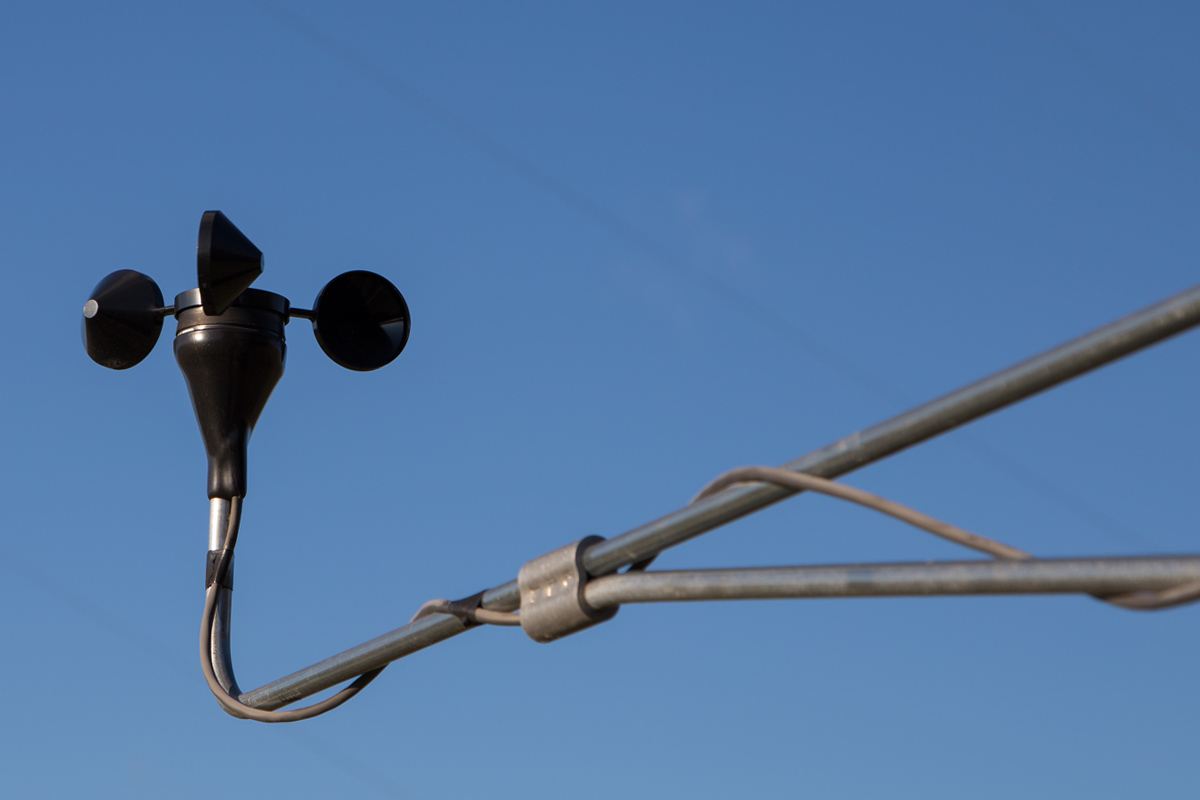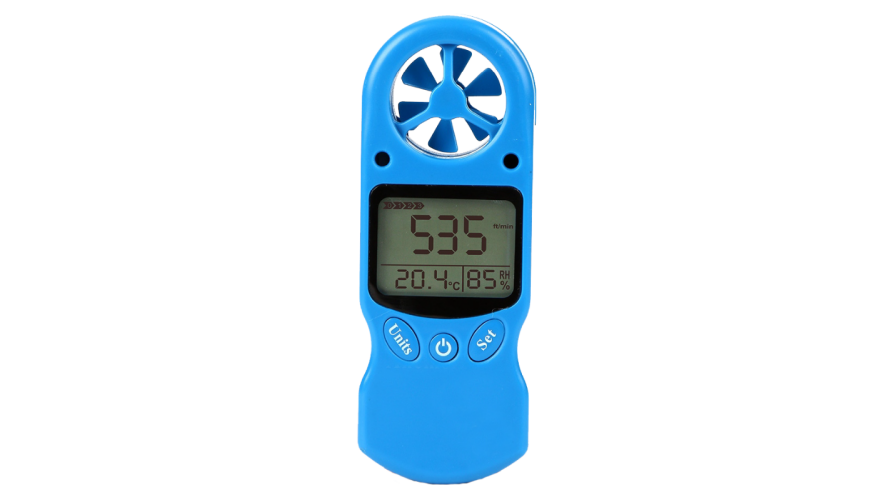Why an Anemometer is Essential for Your Environmental Data Collection
Why an Anemometer is Essential for Your Environmental Data Collection
Blog Article
Discovering the Features and Benefits of Anemometers for Weather Condition Lovers and Professionals
Anemometers stand as crucial devices in the world of weather tracking, providing to both fanatics and seasoned professionals alike. These tools supply a window into the vibrant world of wind patterns and rates, supplying indispensable data for meteorological evaluation and forecasting. From cup anemometers to sonic anemometers, each type brings its one-of-a-kind set of advantages and applications, clarifying numerous facets of weather. As we explore the features and advantages of anemometers, a much deeper understanding emerges not just of prevailing climate sensations but likewise of the more comprehensive ramifications for fields like wind energy manufacturing and ecological research.
Relevance of Anemometers in Weather Condition Tracking
Anemometers play a crucial duty in climate tracking by offering exact dimensions of wind speed, aiding in forecasting and understanding climate patterns. These tools, ranging from traditional cup anemometers to contemporary ultrasonic anemometers, are vital for meteorologists, scientists, and weather lovers alike. By measuring wind rate, anemometers help in determining the strength of weather sensations such as tornados, typhoons, and tornadoes. Furthermore, they supply valuable data for aviation, maritime procedures, and various markets that are sensitive to wind conditions.

Kinds Of Anemometers and Their Applications
The most common types of anemometers consist of mug anemometers, vane anemometers, hot-wire anemometers, and ultrasonic anemometers. Cup anemometers are composed of three or 4 cups installed on straight arms that turn with the wind, measuring its rate. Vane anemometers, on the other hand, utilize an openly turning vane to straighten with the wind direction, supplying both wind rate and instructions dimensions.
Each sort of anemometer has its distinct advantages and applications. Cup anemometers are robust and suitable for general climate monitoring, while vane anemometers are preferred for directional measurements. Hot-wire anemometers are sensitive to reduced air velocities, making them suitable for indoor atmospheres. Ultrasonic anemometers are non-intrusive and use high accuracy, frequently made use of in research and specialized weather condition surveillance applications. Understanding the qualities and applications of each sort of anemometer is crucial for selecting the most proper tool for specific weather checking needs.
Benefits of Making Use Of Anemometers in Forecasting
In meteorology, the usage of anemometers uses very useful advantages for improving the precision of climate forecasting. Anemometers gauge wind speed and direction, providing essential data for predicting weather patterns. By integrating wind information right into projecting designs, meteorologists can better comprehend the activity of weather systems, anticipate modifications in weather, and issue much more exact forecasts.
Furthermore, anemometers play an essential role in assessing potential weather condition threats. Checking wind speeds helps forecasters forecast serious climate events such as cyclones, tornadoes, and winter storms with better accuracy. This very early warning system allows authorities to provide prompt notifies and apply essential safety steps, minimizing the risks to life and property.
Additionally, anemometers help great site in maximizing renewable resource manufacturing. By examining wind patterns, meteorologists can recognize suitable locations for wind farms and forecast energy result, contributing to the reliable generation of wind power.

Anemometers in Wind Energy Production
Given the critical function anemometers play in supplying accurate wind information for weather condition projecting and danger analysis, their value reaches the realm of wind power production. Anemometers are important redirected here instruments in the field of wind power, where the dimension of wind speed and instructions is vital for determining the usefulness and effectiveness of wind turbine installments. By accurately gauging wind speeds at varying heights, anemometers aid maximize the positioning and layout of wind turbines to make best use of energy result.
In wind ranches, anemometers are tactically placed to accumulate real-time wind information that is used to analyze the possible energy manufacturing of a website. This data contributes in figuring out the economic practicality of wind power projects and in forecasting energy generation to make certain grid security. Additionally, anemometers aid in checking wind problems to enhance wind turbine efficiency, protect against damages from high winds, and guarantee the safety of personnel working in the location of wind generators.
Enhancing Weather Understanding With Anemometers

Anemometers play a vital function in improving our understanding of microclimates. These localized weather can differ considerably from broader local projections, making it important to have exact data for specific areas. anemometer. By purposefully placing anemometers in various places, scientists can gather in-depth info on exactly how wind acts in various terrains, metropolitan settings, or bodies of water
Moreover, anemometers add to boosting weather condition projecting versions by supplying real-time data on wind actions. This info is especially important for forecasting serious weather condition events, optimizing farming methods, and sustaining markets like aviation and maritime navigating. In general, anemometers are invaluable instruments that enable us to dive deeper right into the intricacies of climate systems, inevitably causing more accurate predictions and better-informed decisions.
Verdict
In conclusion, anemometers play a crucial function in climate tracking and forecasting by determining wind rate and instructions. They are necessary devices utilized by weather lovers and professionals to collect precise data for forecasting weather patterns and examining potential effects. Anemometers likewise have applications in wind energy production, more highlighting their significance in both meteorology and renewable power sectors. In general, anemometers contribute to boosting our understanding of climate sensations and improving forecasting capabilities. anemometer.
From cup anemometers to sonic anemometers, each kind brings its distinct collection of applications and advantages, losing light on numerous facets of atmospheric problems. These instruments, varying from standard mug anemometers to modern-day ultrasonic anemometers, are crucial for meteorologists, researchers, and weather enthusiasts alike. The most usual kinds of anemometers consist of cup anemometers, vane anemometers, hot-wire anemometers, and ultrasonic anemometers. Mug anemometers are appropriate and durable for basic weather monitoring, while vane anemometers are preferred for directional dimensions. Anemometers are necessary tools in the field of wind power, where the dimension of wind speed and instructions is critical for identifying the expediency and efficiency of wind generator setups.
Report this page